February 21, 2018
An Interview with Mollie McKinley
by Heather Zises
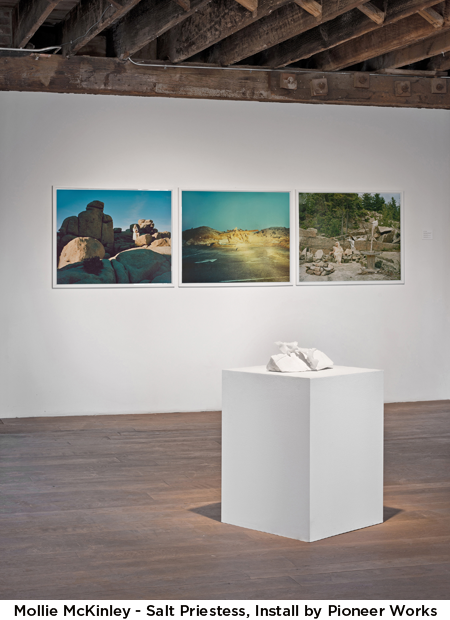 Fjords’ Contributing Writer Heather Zises visits with Hudson Valley artist Mollie McKinley to discuss her multifaceted practice, personal philosophies and views on feminism.
Fjords’ Contributing Writer Heather Zises visits with Hudson Valley artist Mollie McKinley to discuss her multifaceted practice, personal philosophies and views on feminism.
About Mollie McKinley
Mollie McKinley is a Hudson Valley and New York based artist. Her work has been shown at Pioneer Works; Anthology Film Archives; Ethan Cohen Fine Arts; Los Angeles Contemporary Exhibitions; the MoMA Pop Rally; the New York Art Book Fair at MoMA PS1 presented by Independent Curators International and Limited Time Only; Field Projects; four Brucennials; the Index Art Center, Newark; the Wassaic Project Exhibition; SPRING/BREAK Art Show curated by Natalie Kovacs; Anna Kustera Gallery curated by Natalie Kovacs; Dimensions Variable Gallery, Miami; the Art Director’s Club of New York; the Humble Arts Foundation; the Fringe Arts Festival in Philadelphia; One Mile Gallery, Kingston; KUBE Beacon, NY; Matteawan Gallery, Beacon, NY; the Samuel Dorsky Museum of Art, New Paltz, and a host of others. McKinley was recently named a 2018 Creative Glass Center of America Fellow for her salt-based glass sculptures, and will complete new glass work for the project this fall at the Creative Glass Center/Wheaton Arts in New Jersey. McKinley studied photography and filmmaking at Bard College.
Heather Zises: How did themes such as mysticism, intersectional feminism, hermetic philosophy and alchemy first enter your work?
Mollie McKinley: Feminism first entered my life in an organic way. I was a precocious child, yet my parents were conservative. During my adolescence, I developed a strong sense that gender dynamics needed deep repair in our society. As a young woman, my approach to feminism matured by discovering the writings of bell hooks. The idea that sexist oppression is intertwined with other injustices of race, capitalist economics and class, sexual identity, and disability politics rang true to me. This intersectional approach guided me in forming the ethics of my art practice. Mysticism also entered my life when I was a teenager struggling with the death of my father. The word technically refers to union with the ‘divine’, but for me it was union with the void. Or being present with things that we don’t know—learning to be familiar with the unknown, and to sit with that. Hermetic philosophy and alchemy became my focus when I moved to New York City in my twenties, as I worked to understand nature’s polarities.
HZ: Are there any early experiences to which you attribute your interest with the natural world (ecology/geology)?
MM: Absolutely. I spent a large portion of my childhood at my grandmother’s house in Sandwich, Massachusetts. This was our family home since the late 1700s. I have a deep, even obsessive, connection to that place. I have an intimate connection with Cape Cod’s landscapes and my ancestral ties there. It’s a haunted, even romantic, feeling. As an only child, being alone with the elements made a powerful imprint on me: the salt marsh, the bay, the pine barrens. The aesthetic of pared-down Purtanism amidst the indigenous lands of the Wampanoag. My other grandmother had a dairy farm out in Wisconsin, so these two places encouraged time alone with the elements. I also spent time in the southwest, experiencing larger, western landscapes in contrast to a Midwest rural farm or a Cape Cod village. The desert vastness is oceanic, and thinking about its expanse in relationship to the void can be very sensory and corporeal.
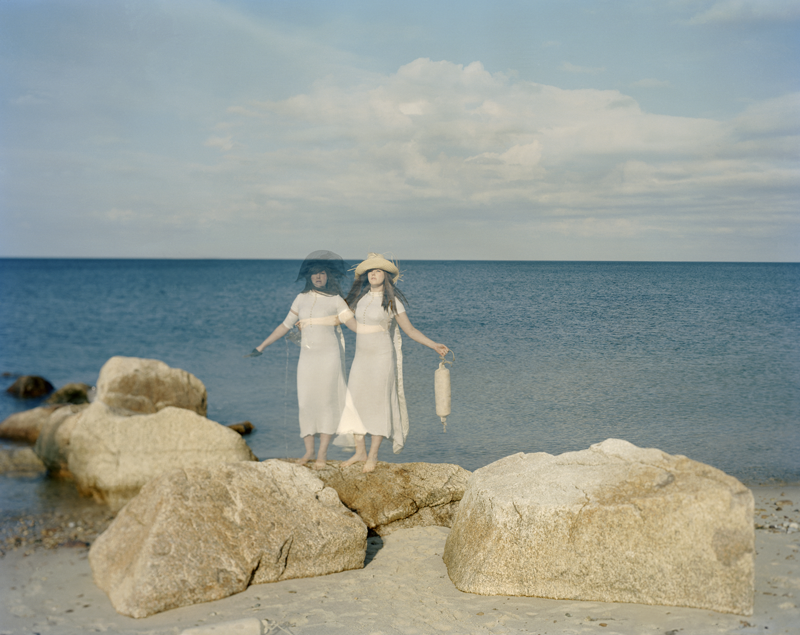
Mollie McKinley - The Magician
HZ: How much does personal travel lend itself to your creative process? For example, do you regularly bring back an object or souvenir from a trip with the intention of including it in a piece?
MM: Travel plays a large role in my process. Most of my photography happens outside of the studio in spaces that are usually not very close to where I live geographically. In recent years, I have made photographs on a remote quarry on an island in rural Maine; deep in the Mojave Desert, in Joshua Tree National Park; a cave lake in Rosendale, New York; and all over Cape Cod. As for collecting objects from my travel, I have a real rock problem. My lifelong obsession with rock formations led me to my salt and glass sculptures. I also work with jetsam and flotsam so I am always gathering nets, buoys and lifejackets on coastlines to use them as props in my photographs.
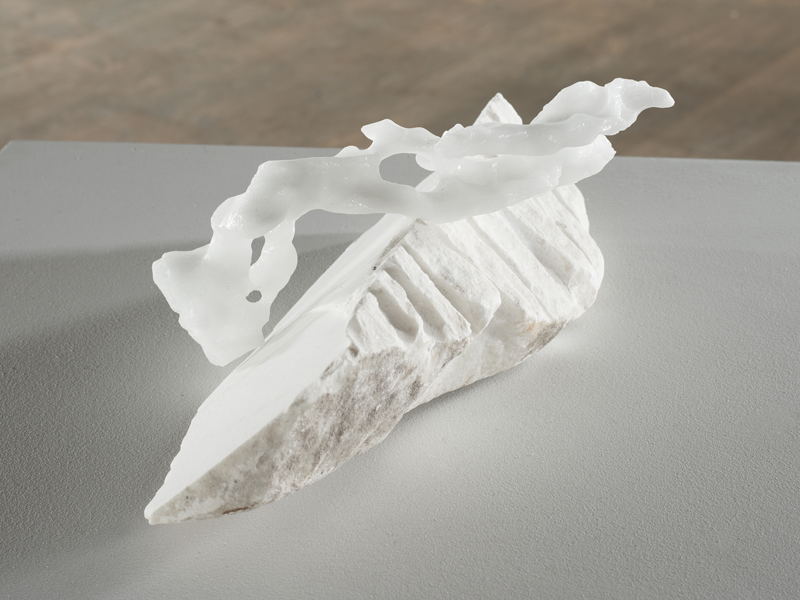
Mollie McKinley - Alchemic Calcination Monolith, photo by Pioneer Works
HZ: Tell me more about the formal undertones of your work. What are the influences from visual art, music, literature, science or other disciplines? Where does your aesthetic vocabulary come from?
MM: Filmmakers Jack Smith, Maya Deren and Kenneth Anger had a large influence on my approach towards making photographs. The idea of an existential journey meeting a landscape and making a poetic intersection was very important to me. The landscape is a character itself. My photographs are shot on large format film. The color palette was developed from watching 1970’s art house horror films. I reduce the cinematic as many photographers do, so the photograph as a fragmented, abstracted narrative has always appealed to me. I look to Ana Mendieta and Louise Bourgeois, who both translate trauma into refined artworks using the body, or marble, or the earth itself. They each found clear and visceral articulations of complexity, often in elegant, minimal form.
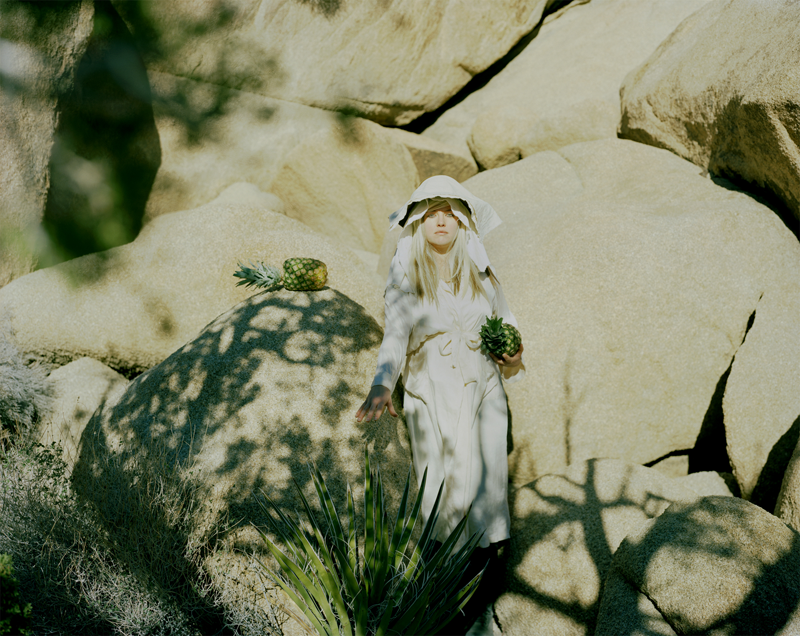
Mollie McKinley - Pineapple Liturgy II
HZ: How influential was your experience at Bard College on your practice? Did you have any key teachers there?
MM: My art history professor Susan Aberth taught a class on the history of Surrealist women artists and one on Latin American Art, Social Change, and Revolution. Aberth was the first professor to encourage my cross-disciplinary interest in feminism and the occult. She was incredibly supportive in helping me explore the feminist and gendered aspects of my work, and introduced me to queer artists such as Claude Cahun. I studied photography with Stephen Shore, who taught me a work ethic and the craft of large format photography with an 8x10 field camera. Peter Hutton encouraged my performative experimental films.
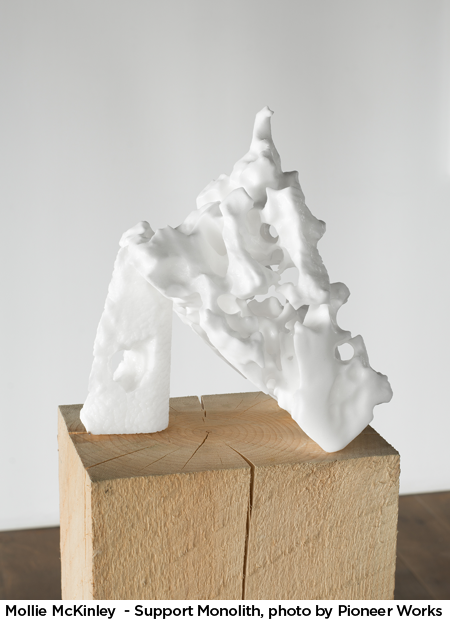 HZ: What distinguishes your salt sculptures as “monoliths” as opposed to sculptures? Do you think of them as permanent works or something that is more ephemeral?
HZ: What distinguishes your salt sculptures as “monoliths” as opposed to sculptures? Do you think of them as permanent works or something that is more ephemeral?
MM: They are called Salt Monoliths because they are about the erosion of physical material in geologic time. Time is the ultimate monolith. It’s an interesting meditation to think about the rates at which earthen substances, such as salt or rock or water, change and shift. When I think about geologic time versus human time, it’s the ultimate reality check for all of us. But when the salt is cast in glass, especially clear lead crystal that refracts light, they shift meaning entirely. They allude to galactic nebulas, or the unseen made physical, so “monolith” seems much too terrestrial to describe them.
HZ: How did you become acquainted with salt as a medium and how did you learn to manipulate and wield such a relatively unstable material? How much do you rely on the physical properties of the material to guide you in creating a form?
MM: In 2012 I was an artist in residence at the Wassaic Project, and my friend MaryKate Maher invited me to Tractor Supply to look for experimental materials. I got four blocks of salt, found the power washer in the printmaking space, and tried sculpting them with water. The first ones were crude. The material is difficult to work with, and it took years to understand its abilities. From an outsider’s point of view, the salt and its surfaces might seem unstable. There are certainly delicate, fragile points on a finished work. But salt is a preservative. So what happens over time is that they cure and start to take on a ceramic-like quality. If you tap on them, they have a hollow sound. Yet like an organism, they have their own respiration process, relational to moisture, and they need humidity control like all art. My glass casts challenge me to consider which forms can withstand the technical restraints of the moldmaking process.
HZ: Your Priestess series features mysterious female figures outfitted in upcycled materials holding found objects. They are shot in remote locations like abandoned parking lots or rustic nature. Can you explain some of the iconography and symbols used? For example, how are you exploring mythological archetypes with this series?
MM: Unlike the Salt Monoliths, they are less direct about what exactly they mean. I like to have that bit of openness for interpretation, leaving the narratives hanging. Not having a ritual act explicitly described in the photographs allows the viewer to more fully experience mysterious in-between moments. The ripe pauses of before and after.
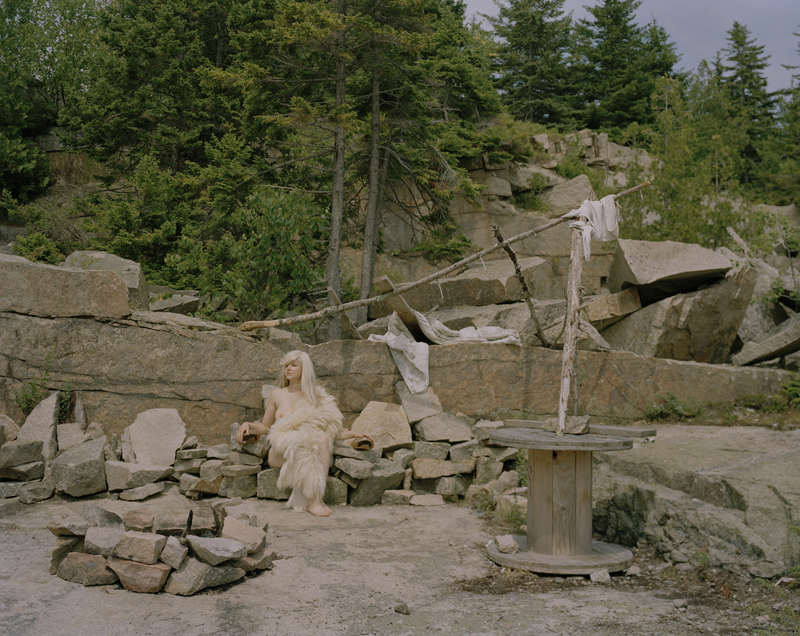
Mollie McKinley - Turtle Queen
HZ: Kiki Smith’s Catholic upbringing played a significant role in her preoccupation with the corporeal over the intellectual: “Catholicism has these ideas of the host, eating the body, drinking the body, ingesting a soul or a spirit; and then of the reliquary, like a chop shop for bodies. Catholicism is always involved in physical manifestations of spiritual conditions, always taking inanimate objects and attributing meaning to them. In that way, it is compatible with art.” What are your thoughts on her statement in a contemporary context? Do you find any connections with this statement in your own work?
MM: Kiki Smith is one of the artists I know of working in mythology who has also worked in cast glass. I think her statement whispers of the ancient goddess-based religious traditions still found in Judeo-Christian theology. I’ve always had a cautious fascination with Anglican and Catholic rituals. They seem so sensual and visceral, but cloaked in formality. They’re also campy, high theatre. This fascination led me to study the historical period when the goddess religions were overtaken, when nature and unknown became demon.
Going back to other feminist artists like Ana Mendieta that work with the body, it’s about envisioning ritual processes in relationship with nature, engaging with the unknown. For me its also about how far can I push the body. There is much unseen of the ritual process, for both photographs and sculptures. Most is hidden: you only see slivers or fragments, as you would in an ecstatic epiphany. I think ritual is a relationship with gesture, fluidity of meaning, and the rhythms of the natural world. It’s also a theatrical intervention with a site. HZ: What are your views on titling a work versus leaving it untitled so that viewers can bring their own associations to pieces? MM: I always felt a sense of responsibility to put a title on my pieces. However, I like your question because it makes me think what would happen if they were all untitled? Looking to theater, literature and film, titling has this power of guiding you and I think I’ve been conscious that if I leave my works untitled, then viewers may not have a starting place in the work. For me, so many of my titles are super literal, which offers a bit of a middle ground between the two concepts of “titled” versus “untitled.”. I also like to title things for practical purposes. HZ: What do you feel you get out of making work, and what do wish others would get from it? MM: My work is centered around the process of learning to understand the natural world more deeply. For others, I like to provide a platform for the contemplation of transformation, time, and the mysterious. For myself, my practice materializes my personal philosophical questions, through ritual practices of photography and sculpture. 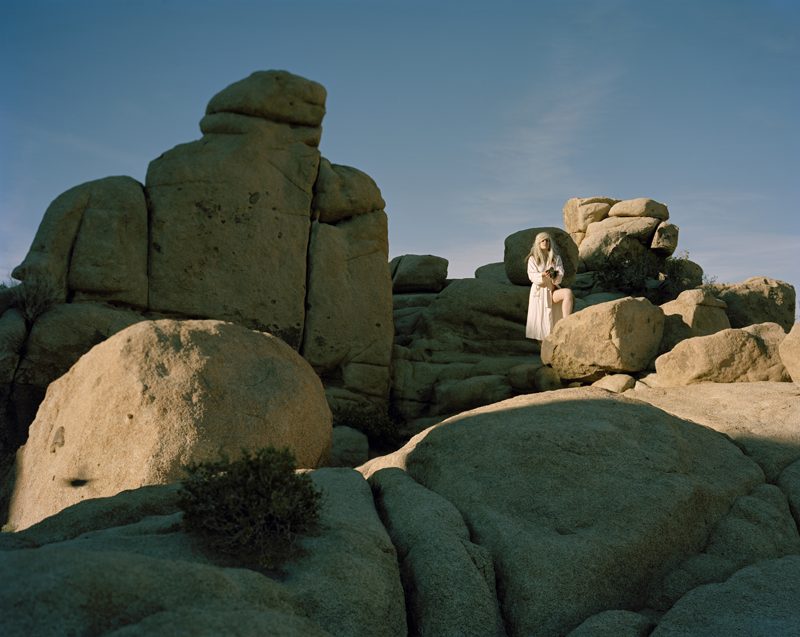
Mollie McKinley - Cacti Offering
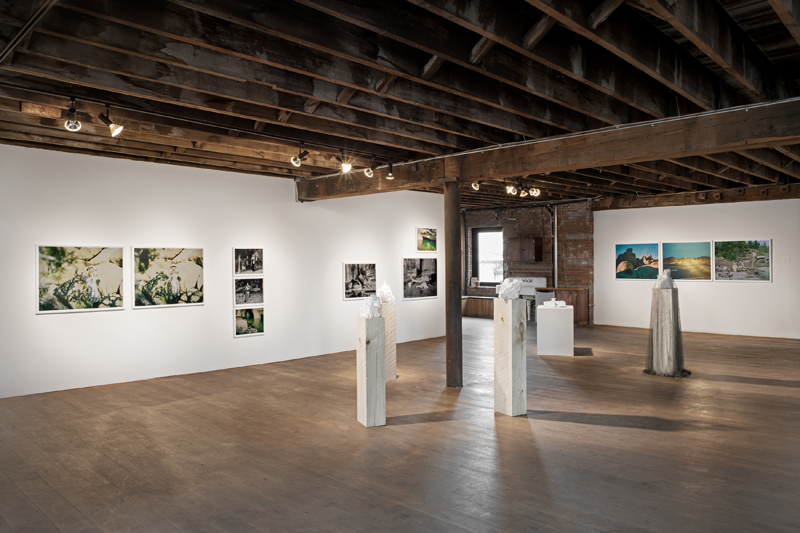
Mollie McKinley - Salt Priestess, installation, photo by Pioneer Works
